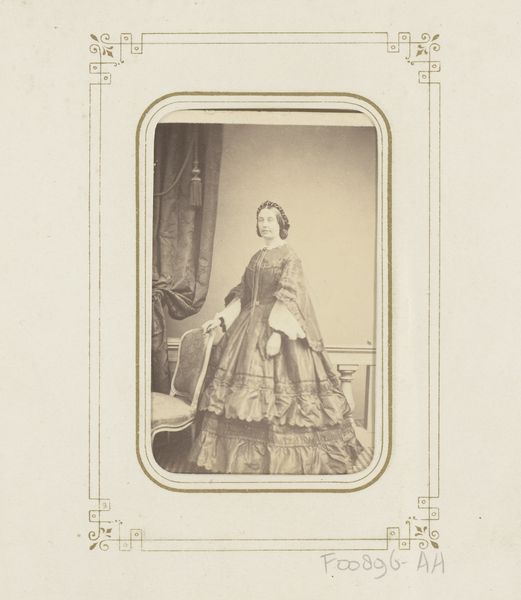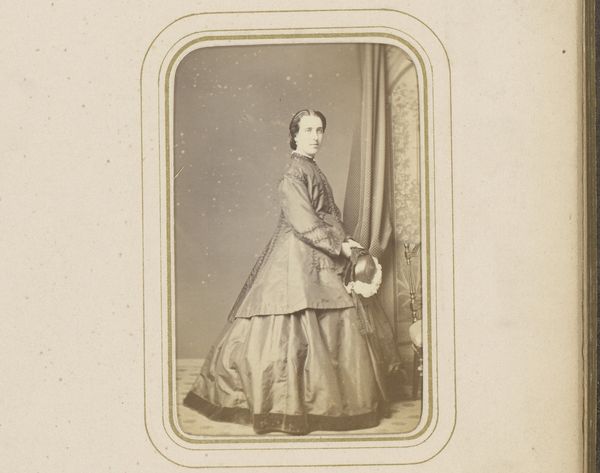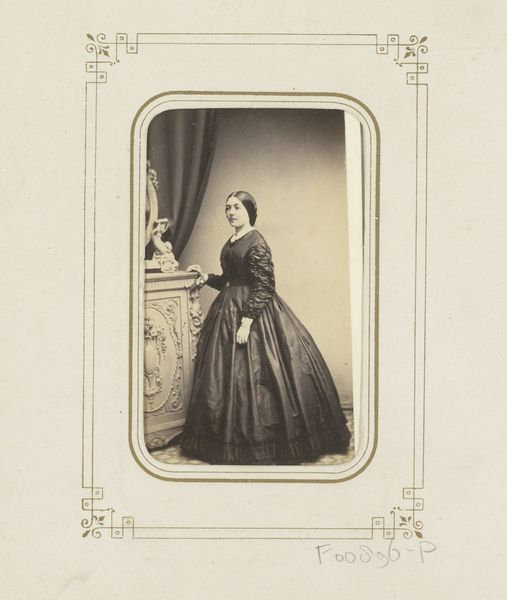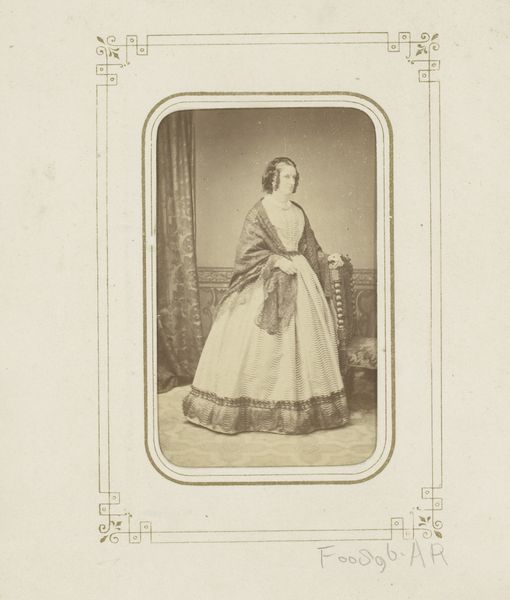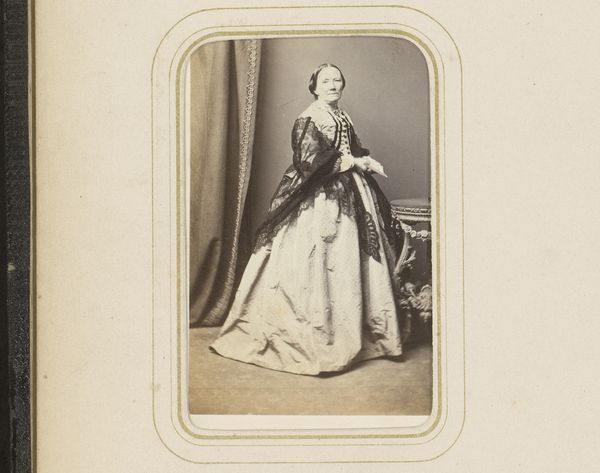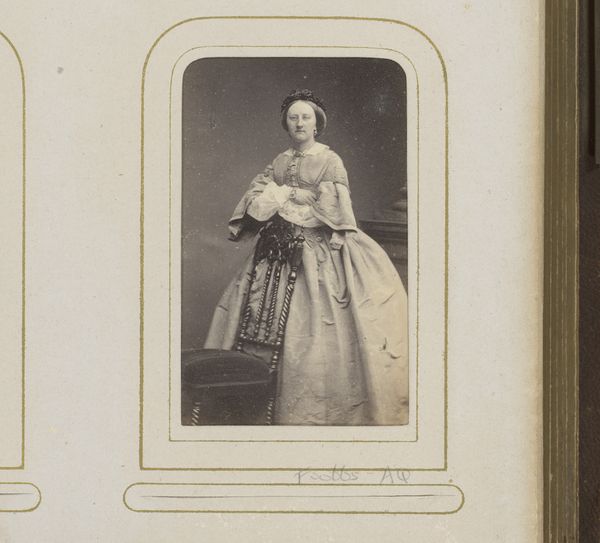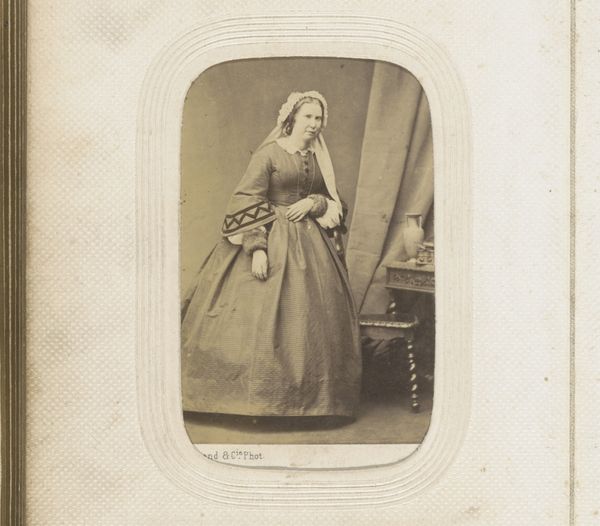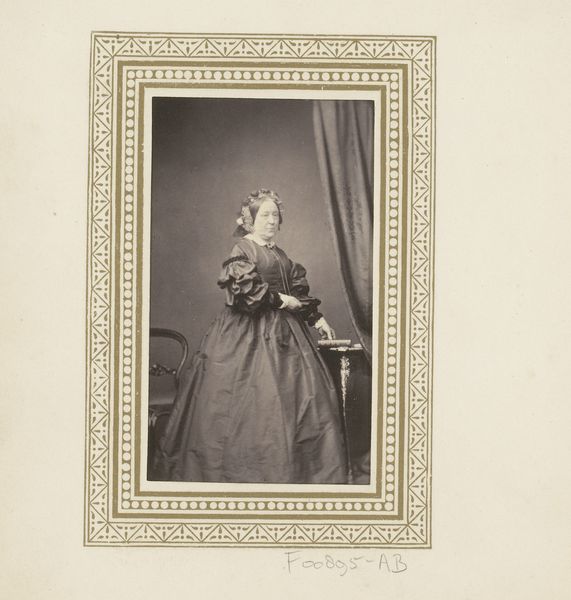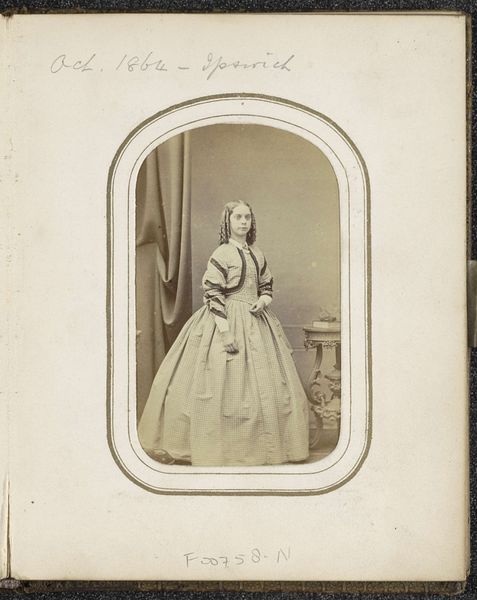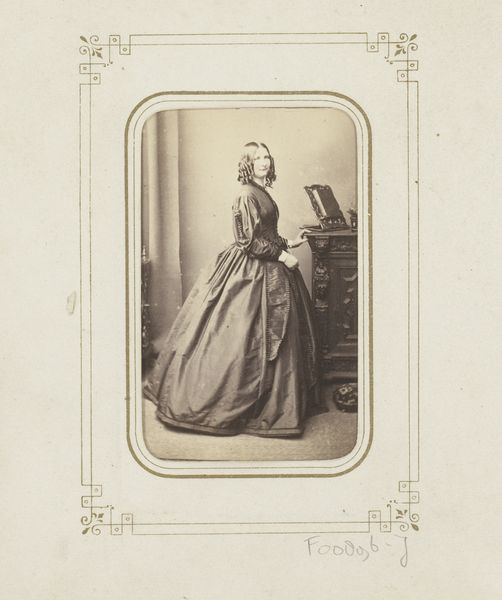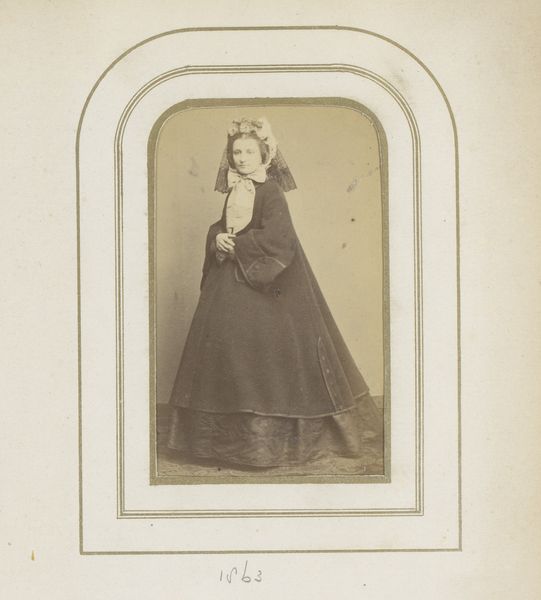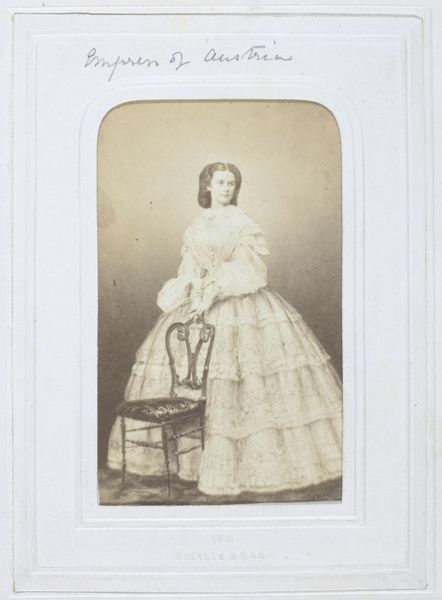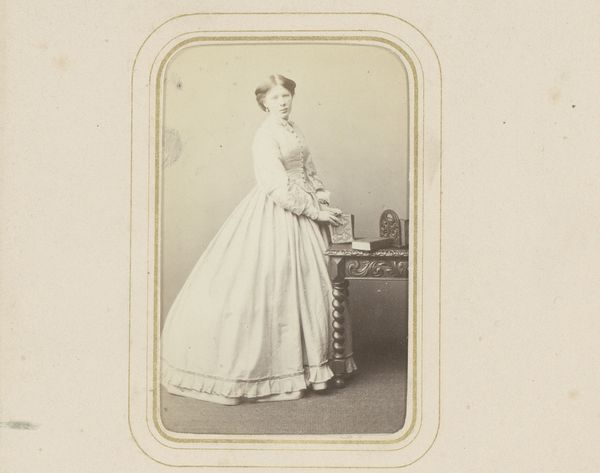
Dimensions: height 86 mm, width 52 mm
Copyright: Rijks Museum: Open Domain
Editor: Here we have a gelatin-silver print entitled "Portret van een jonge vrouw" or "Portrait of a Young Woman" by G. and R. Lavis, sometime between 1855 and 1865. It’s striking how the subject's dress nearly fills the frame. How do you interpret the formal qualities of this photograph? Curator: The overwhelming quality is certainly balance. The composition is anchored by the large, light mass of the dress, countered by the darker, intricate forms on the table to the subject’s right. Note how the drape of the curtain echoes the curve of her gown, subtly reinforcing this visual harmony. What do you make of the tonal range? Editor: It seems quite limited, almost monochromatic, but I notice subtle variations within that narrow range. Curator: Precisely. The photographers, G. and R. Lavis, demonstrate exceptional control over the gelatin-silver process. Consider the delicate gradation of light on the subject’s face, or the textural rendering of the dress fabric. These contribute to the photograph’s formal elegance. The background also recedes appropriately with excellent tonality. Editor: So, the limited tonal range actually enhances the formal composition, as it helps the subject and her dress really stand out from their surroundings. Curator: Indeed. The constraint becomes a strength, drawing the viewer’s eye to key structural elements. By attending to these intrinsic qualities, the viewer comes away with a deeper appreciation for the artistry that produced "Portret van een jonge vrouw". What an interesting choice of mise-en-scène with an ornate display next to her and curtain background. Editor: This has helped me consider aspects of photographic portraits from the 19th century, especially that balance in its elements contributes to the composition, rather than specific cultural context.
Comments
No comments
Be the first to comment and join the conversation on the ultimate creative platform.

